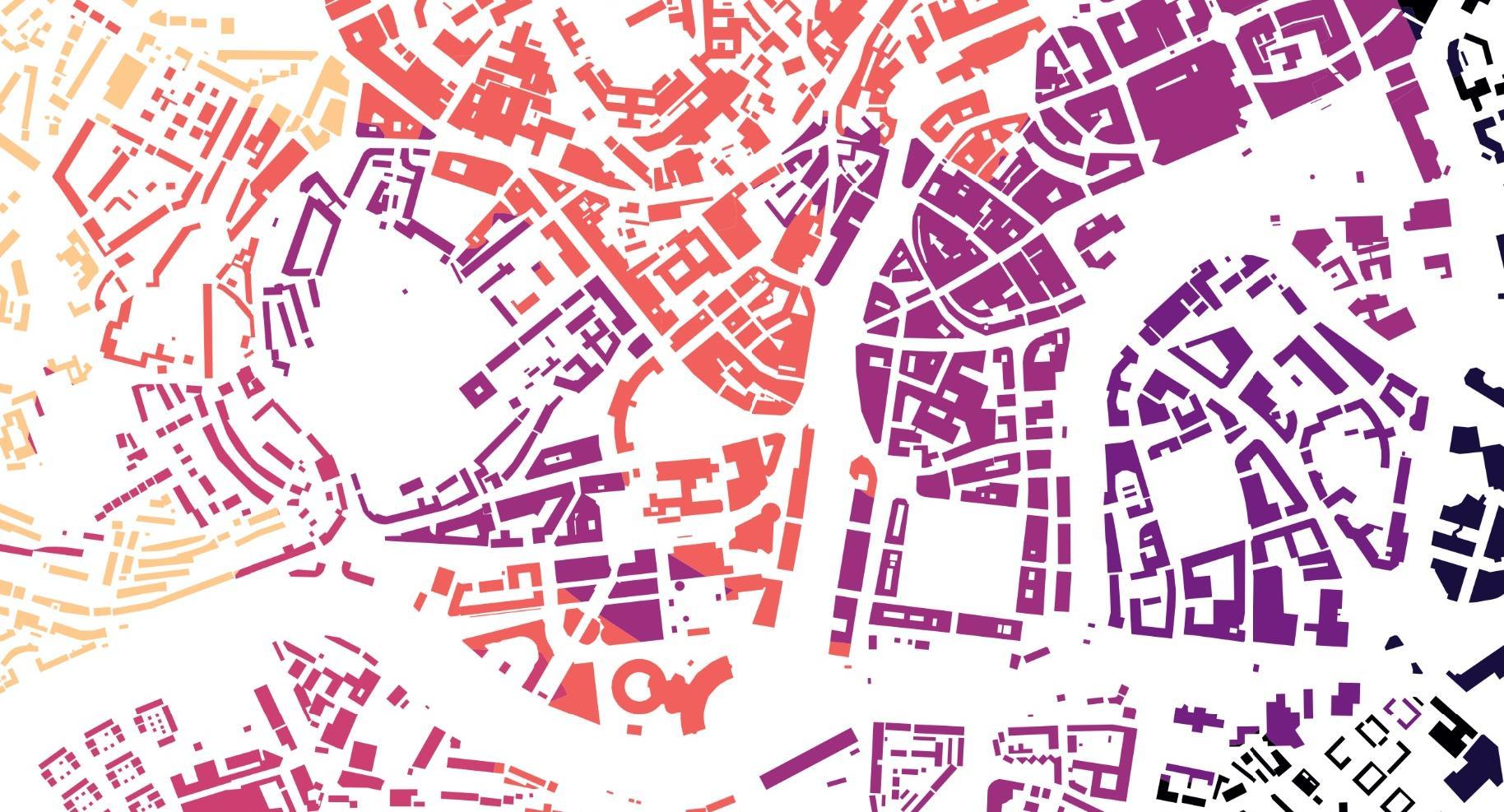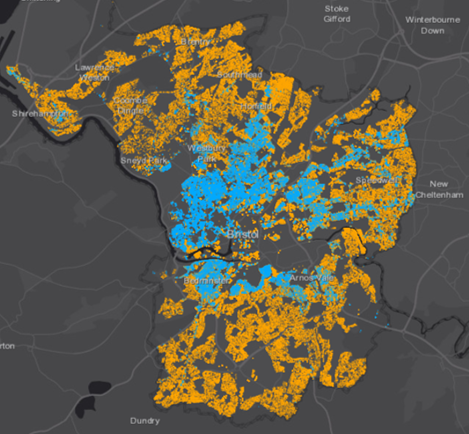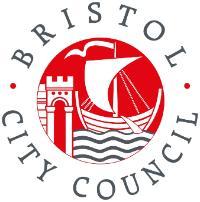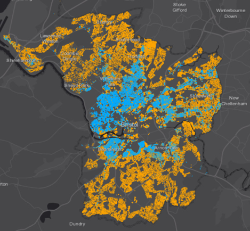Retrofitting Rentals: Exploring the energy efficiency of residential dwellings in Bristol

Bristol stands as the fastest-growing UK core city. Its population grew 10% between 2011 and 2021, from 428,000 to 472,500 (UK Census, 2011 and 2021). It is a city where a large and growing proportion of residents rent their homes: 50,683 privately (26.8%) and 35,878 socially (18.7%) (UK Census, 2021). This means that more than a quarter of households in the city privately rent their homes, surpassing the national average by 6-9%.
Housing sits at the centre of many collective and intersecting environmental and social challenges, and working to improve the energy efficiency of privately rented dwellings can play a pivotal role in generating solutions for energy security, energy poverty, climate change, and the increasing cost of living.
This report endeavours to highlight the spatial inequalities of dwellings’ energy efficiency across the Bristol Local Authority District through the application of statistical and spatial analysis. First, a number of datasets and how they are used is explained alongside a brief exploration of each dataset in relation to Bristol. Analysis is then explored in more detail by specifically focusing on energy efficiency, before moving onto analysis of geovisualisations and modelling. Analysis predominantly relies on Energy Performance Certificate (EPC) data. As such, analysis is limited to dwellings that have an EPC, and so within the owner-occupied tenure, there is a disproportionate overrepresentation of new builds due to EPCs being introduced in 2007.
Main Findings
- The median EPC rating for all dwellings in Bristol is 67, matching the English average of 67. For private and social rentals, Bristol outperforms the English average, but lags in owner-occupied dwellings.
- The median efficiency rating for all dwellings in Bristol is D, apart from social rentals which have a median efficiency rating of C.
- 56% of all of Bristol’s dwellings have an energy efficiency rating of D and below. 3% are F and below.
- Dwellings in the most deprived deciles exhibit lower levels of energy efficiency. Dwellings in the most deprived decile are associated with a median efficiency score 9 points lower than the least deprived decile.
- Flats are the built form where private rentals fall behind other tenures the most in terms of energy efficiency.
There are several maps included in this report. A companion web map has been constructed so users can interact with these maps, alongside a few other useful maps.

Conclusion
This report provides innovative and spatially sensitive insights into the inequalities of rental properties in Bristol, with a primary focus on energy efficiency.
It makes clear the difficult challenges that Bristol confronts when targeting the improvement of energy efficiency in residential dwellings.
Policy recommendations must also consider local knowledge, practical expertise and insights of 'on the ground' retrofitting.
Data
This research combines several independent data sources to conduct analysis:
- Energy Performance Certificate (EPC) data (Open Data Communities, 2023) at Unique Property Reference Number (UPRN) level.
- A GeoPackage (a spatial data file used for mapping).
- The Land Registry’s Price Paid Data, adjusted to Price per Square Meter (Chi et al, 2022).
- The 2019 Indices of Multiple Deprivation (IMD) (Ministry of Housing, Communities & Local Government, 2019).
- Various administrative boundary shapefiles and a UPRN shapefile (Office of National Statistics, 2023; Ordnance Survey, 2023).
Authors

